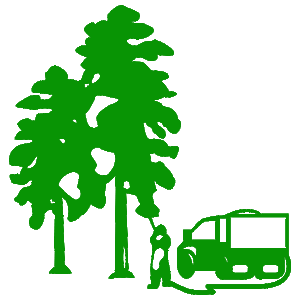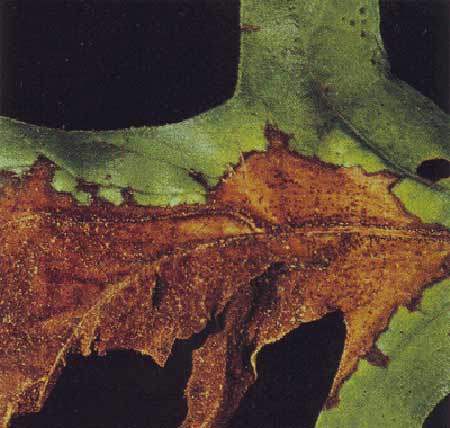Oozing Sap
Oozing sap or pitch, to some degree, is a normal condition for all shrubs and trees. However, it can also be an indicator of other, more seriouis problems such as injured bark, disease, or insect infestations.
Under normal conditions drops of milky whitish, clear to amber sap may appear on seemingly healthy bark. If there are no signs of damage close to the ooze, the condition should be considered the normal process of a healthy tree.
Bark injury from borers can cause ooze. Borer damage to the bark is fairly easy to detect. Small holes which appear to have been drilled mechanically will be scattered around the trunk and limbs. These borer holes may have signs of sap or sawdust around the opening.
Fungal and bacterial infections can also cause the tree to ooze. These infections will often travel below the bark, causing sunken areas in the bark where the infection has decimated the sapwood. These cankers may be on twigs, branches, limbs and trunk. For more information, see Canker.
Mechanical injuries to the bark will cause most trees to ooze sap. This will be particularly apparent as the sap begins to rise in the spring, after an overwinter injury. Mechanical injuries include chafing, gouges, cuts which penetrate the bark to the cambium layer, and can be caused by cables, chains, or fence wire wrapped around, or tensioned against the tree; scraping from lawnmowers, weed eaters, or other lawn care equipment; screws, nails, hooks and other mechanical fasteners which have been inserted into the tree; and any other non-insect related penetration of the bark.
Stress from environmental conditions can also cause a tree or shrub to ooze sap. Poorly drained soils, dramatic changes in temperature or soil moisture can trigger oozing sap. If the affected tree is repeatedly subjected to overly wet soil, measures should be taken to improve drainage.
The most important care practices for the long-term health of your trees are to keep them consistently fed and watered.









